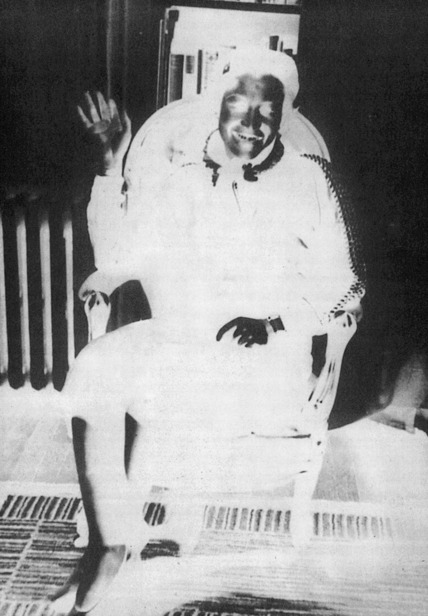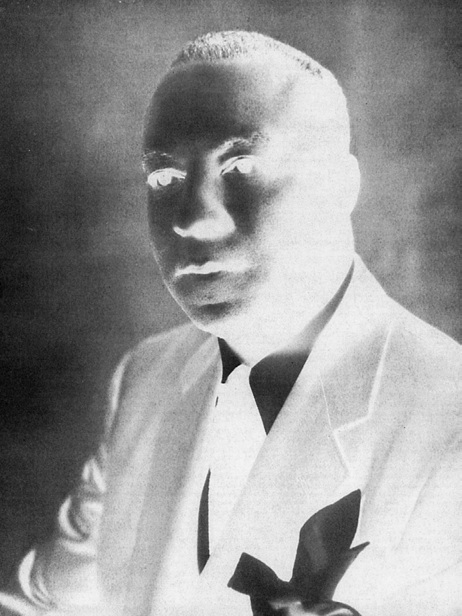The History of Florida (95 page)
Read The History of Florida Online
Authors: Michael Gannon
Tags: #History, #United States, #State & Local, #Americas

Supreme Court of Florida only to see the ruling negated within a matter of
months.
The march of Jim Crow took place within the context of sometimes-vi-
olent subjugation of Florida’s African American population, especial y, but
not always, in places remote from the larger cities. During the half century
that began in 1880, Florida led in the nation in lynchings when computed on
a per capita basis. The span of years from 1900 to 1917 alone saw about ninety
black men put to death, often horribly, by extralegal violence. The supposed
wrong might be as simple as an inadvertent insult to a white woman. Fifty
more lynchings from 1918 to 1930 inflated the total. In fact, from 1900 to
1930 Florida’s lynching rate ran nearly twice as high as that of Mississippi,
Georgia, or Louisiana; more than three times that of Alabama; and six times
that of South Carolina. The carnage did not end there. The nation watched
aghast in 1934 at the travesty of justice involved in the cruel Jackson County
murder of Claude Neal. One year later, Ku Klux Klansmen had dragged
Reuben Stacy from a Fort Lauderdale jail before putting him to death by
hanging and gunfire, while Tal ahassee lawmen acting as Klansmen lynched
Richard Hawkins and Ernest Ponder in 1937 virtual y at Supreme Court
Justice Glenn Terrel ’s front door. As late as 1945 Governor Mil ard Caldwell
454 · Larry Eugene Rivers
simply refused to investigate the lynching of Jesse James Payne in Madison
County, creating another national scandal. In justification of his failure to
act, the governor merely denied there had been a lynching.
The early 1910s brought dramatic change and not for the best. Florida’s
progressively evolving urban-oriented black culture and society col ided
with a rising tide of Jim Crow discrimination, racial violence, and eco-
nomic intimidation. Adding to the problems were increasingly depressed
conditions in rural areas produced by the cotton boll weevil and low cotton
prices, a situation from which those who “sharecropped” and did not own
their land suffered the most. Booker T. Washington’s 1912 tour of the Sun-
shine State exemplified the transitory nature of the times. At Lake City, the
famed educator credibly could assert, “In every community in the South
where colored people live in large numbers there are white friends who
stand by us.” Then, days later at Jacksonville, Washington recoiled as a white
mob unsuccessful y attempted to seize him from his automobile. Historian
David H. Jackson Jr. described events occurring thereafter. “In the midst of
his speech, Washington heard the howls of a mob in the distance on its way
to lynch the accused murderers of [white grocer Simon] Silverstein at the
jail,” the historian wrote. To his credit, according to Jackson, Washington
“launched into a fervid denunciation of lynching and ended with an earnest
proof
and eloquent appeal for better feeling between the races.”8
In the years surrounding Booker T. Washington’s close escape at Jackson-
ville, a tide shifted within Florida’s African American population and, with
the shift, large numbers of men, women, and children opted to abandon
their Sunshine State homes for an uncertain future in the North. The “Great
Migration” touched all of the Deep South states of the former Confederacy,
but in Florida the impact evidenced itself unmistakably. A report detailed
the net loss as of 1916. Live Oak had had seen “a large proportion of its col-
ored population” depart, as had Dunnellon. One-third of black Lakelanders
had left. “Not less than one-fourth of the black population of Orlando was
swept into this movement,” the report continued. “Probably half of the ne-
groes of Palatka, Miami and DeLand, migrated as indicated by schools and
churches, the membership of which decreased one-half.” It added: “From
3,000 to 5,000 negroes migrated from Tampa and Hil sboro County. Jack-
sonville, the largest city in Florida, with a population of about 35,000 ne-
groes, lost about 6,000 or 8,000 of its own black population and served as
an assembling point for 14,000 or 15,000 others who went to the North.”9
The emigration tide continued its urgent flow as another racist governor,
Sidney J. Catts, took office in 1917. Known as “the Cracker Messiah,” Catts’s
Florida’s African American Experience: The Twentieth Century and Beyond · 455
views ran to such extremes that he opposed, as his biographer Wayne Flynt
put it, “both vocational and classical education for Negroes.” The gover-
nor at first seemed pleased as black traveling parties crossed the state line
headed north, but America’s entry into World War I placed demands upon
the state that a weakened labor pool could not begin to meet. Now, Catts
delved into his experience as a Baptist preacher to urge African Americans,
as Flynt noted, “to stay in a warm climate where ‘the Creator had put them.’”
When that overture proved of no avail, the state’s chief executive launched a
roundup of northern labor recruiters while prompting local governments to
issue “work or fight” orders designed to compel black men to seek employ-
ment or be drafted into the military. In the end, laborers from the Bahamas
filled the gap that Catts’s misguided leadership could not.10
Long-term consequences, it hardly need be said, resulted from the flight
of so many. To begin with, a significant percentage of the most talented and
promising black Floridians departed, some for good, some fortunately only
temporarily. James Weldon Johnson—who at Jacksonville in 1900 had au-
thored the words to “Lift Every Voice and Sing,” often called the Negro na-
tional anthem—already had gone, as had his composer brother Rosamond,
a graduate of the New England Conservatory and the artist who added the
music to “Lift Every Voice and Sing.” Large enough numbers followed that
proof
Florida’s contributions to what history has called the Harlem Renaissance
of the 1920s and 1930s stood extraordinarily high. To name only a few in-
dividuals, James Weldon Johnson earned respect as a writer and poet while
Zora Neale Hurston of Eatonvil e penned evocative fiction and insightful
sociological studies focused back on her home state. Poet Alpheus Butler,
son of Miami’s first black medical doctor, James A. Butler, launched a cre-
ative career that flourished for four decades. Sculptor Augusta Savage of
Green Cove Springs meanwhile developed talent of immense proportions.
It is easily understandable why, in 1934, she would become the first Afri-
can American selected to the National Association of Women Painters and
Sculptors.
Along with the writers, poets, artists, sculptors, and intel ectuals unfortu-
nately went some of the greatest leadership potential. Florida’s loss happily
proved the nation’s gain. If any one person embodied this fact, that person
was Crescent City’s A. Philip Randolph. Organizer of the Brotherhood of
Sleeping Car Porters, he had emerged by the 1940s as one of the nation’s
most powerful labor leaders. Stil active decades later, Randolph can be
credited with organizing the 1963 March on Washington, the largest civil
rights demonstration ever held in the United States.

456 · Larry Eugene Rivers
proof
Zora Neale Hurston left the all-black town of Eatonville, near Orlando, where she was
born, to pursue an education and a writing career in New York City. With books such as
Mules
and
Men
(1935),
Their
Eyes
Were
Watching
God
(1937), and
Dust
Tracks
on
a
Road
(1942), she became a luminary of the Harlem Renaissance group of writers and drama-tists in 1930s. Though her last years were spent in poverty as a domestic servant in Fort
Pierce, where she was buried in an unmarked grave in 1960, her name and books have
since achieved international fame.
The Great Migration, when combined with growth in central and south
Florida during the 1920s and afterward, additional y accelerated key de-
mographic and economic trends. Black residents of rural areas, especial y
young people, increasingly sought lives in towns and cities, whether north-
ern or in Florida. Unprepared by education or experience for the new en-
vironment, the arrivals often found it difficult, if not impossible, to secure
rewarding or even dependable employment. Florida’s economic “bust” of

Florida’s African American Experience: The Twentieth Century and Beyond · 457
1926, which ushered in Depression-era conditions that, in places, would en-
dure until World War II, made matters even worse. Urban poverty and asso-
ciated problems grew as black contributions to Florida agriculture declined.
Low commodity prices pressed African American owners and devastated
sharecroppers. White-dominated state and local governments meanwhile
permitted white owners to pay extraordinarily low wages while al owing im-
portation of competing foreign workers. A 1963 report detailed the results.
“The living and working conditions of the Negro farm worker in the State
of Florida have already deteriorated far beyond the minimal standards of
decency that are normal y accepted in American society.”11
The most urban of southern states in the process became even more ur-
ban as each year and decade of the twentieth century passed by. The state’s
population, including its African American population, grew by leaps and
bounds after 1920. Always, though, whites arrived in far higher numbers
proof
A. Philip Randolph was born in Crescent City in 1889. Educated in Jacksonville and New
York in the 1920s, he organized the Brotherhood of Sleeping Car Porters, an all-black
AFL union. As a result of his leadership, Pullman porters’ working hours were cut, pay
was increased, and working conditions were improved. During World War II and after-
ward, Randolph worked to end racial discrimination in defense factories and in the
military. In 1963 he organized and directed a march on Washington that became the
largest civil rights demonstration in the nation’s history. He died in 1979.
458 · Larry Eugene Rivers
than did blacks. Having constituted almost 44 percent of Florida’s popula-
tion in 1900, by World War II’s end in 1945 the African American total stood
at less than 25 percent. The slide continued to the point that blacks of non-
Hispanic origin comprised by 2010 a slim 16 percent of 18.8 million persons.
That low figure interestingly represented an uptick from 2000’s 14.6 percent.
Where a dozen counties had shown African American majorities in 1900,
only two—Gadsden and Jefferson—did so in 1945. Gadsden alone claimed
a black majority in 2010. Black majorities in high-population cities, too, had
disappeared well before World War II’s conclusion. Florida’s demographic
face had been altered irrevocably.
Back during the World War I era, when these trends were beginning to
build, black residents remaining in Florida faced a serious and immediate
challenge of protecting themselves against prevailing threats. Accordingly,
protective leagues of various sorts were organized local y and groups such
as the Odd Fellows and the Knights of Pythias attempted as best they could
to afford statewide connections. Black lawyers—among them I. H. Purcel ,